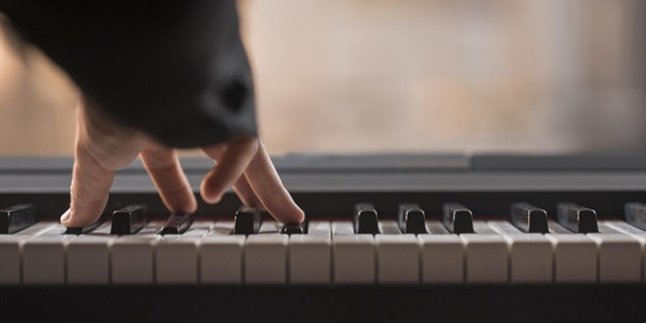Kapanlagi.com - Kata ganti orang or personal pronouns are a type of word that replaces a noun or noun phrase. Personal pronouns are divided into three and can be singular or plural. And these personal pronouns can only be used to replace human nouns, human names, or personified things. Except for "ia", which in limited circles is often used to replace inanimate nouns.
The use of pronouns is intended to make a sentence more effective and concise. Pronouns are usually found in subject or object positions, but it is also possible in predicate positions. So you need to know when to replace personal pronouns so that the sentence doesn't look wordy.
And according to various sources, here are some examples of personal pronouns along with their meanings that you can know. Let's check it out KLovers.
1. Personal Pronouns

Illustration (credit: Freepik)
Personal pronouns, as mentioned earlier, are one of the most frequently used types of pronouns. These personal pronouns are also known as persona pronouns.
Personal pronouns are a type of pronoun used to replace personal nouns or personas with other nouns. Personal pronouns are divided into 6 types, namely:
- first-person singular pronouns, for example, I and Me
- first-person plural pronouns, for example, We
- second-person singular pronouns, for example, You
- second-person plural pronouns, for example, You all
- third-person singular pronouns, for example, He and She
- third-person plural pronouns, for example, They
And here are some examples of sentences using personal pronouns:
- I am always happy when watching romantic movies.
- I work hard to achieve my goals.
- We must respect teachers because they are like second parents at school.
- We never come to school late.
- You don't have to do it if it's difficult.
- Thank you for helping my family all this time.
- You all should not disturb that little cat.
- He sat in the corner of the office, lost in thought and crying.
Those are some types of personal pronouns and their examples that you can understand. However, besides personal pronouns, there are also several other types of pronouns that you should know. And here are some personal pronouns that you must know.
2. Possessive Pronouns

Illustration (credit: Freepik)
In addition to personal pronouns, there are also possessive pronouns, or also known as possessive pronouns. These pronouns are used to indicate ownership. For example, -ku, -mu, -nya. The pronoun "-nya" can be used for pronouns other than personal nouns. This pronoun is located at the end of a word.
Examples of sentences using possessive pronouns:
- Your writing cannot be read because it is not neat
- His hard work is never rewarded with kindness
- I only write my poem for him
3. Interrogative Pronouns

Illustration (credit: Freepik)
Meanwhile, interrogative pronouns are often referred to as interrogative pronouns. This type of pronoun functions to ask about objects, time, place, condition, or quantity, and so on. This pronoun is used to gather information about an event. Personal pronouns are divided into 4 types, namely:
- Personal interrogative pronouns: who, what.
- Place interrogative pronouns: where, to where.
- Time interrogative pronouns: when.
- Condition interrogative pronouns: how, why.
And here are examples of sentences using interrogative pronouns:
- When will you return to your hometown?
- Who will take care of your grandfather's farm if not you?
- How to overcome unemployment in this country?
4. Demonstrative Pronouns

Illustration (credit: Freepik)
Not only personal pronouns, but there are also demonstrative pronouns, also known as pronomina demonstrativa. Demonstrative pronouns are used as location or object pointers. Demonstrative pronouns are divided into 3 types: general pointers, locational pointers, and object pointers.
- Locational pointers: there, here, over there, to there, to here, to that place, at there, at here, at that place.
- General pointers: this, that.
- Object pointers: like this, like that.
This is an example of a sentence using demonstrative pronouns:
- This cellphone is a valuable gift from my father.
- The situation here does not allow for safe conversation.
- This kind of situation always makes Tina anxious whenever she meets him.
5. Connecting Pronouns

Illustration (credit: Freepik)
Types of pronouns other than personal pronouns are relative pronouns, also known as Pronomina relative. Relative pronouns are used as connectors between main clauses and subordinate clauses.
An example of a relative pronoun is 'yang'. This relative pronoun is often found in compound sentences, because compound sentences require a connector or conjunction to connect the main clause and the subordinate clause.
Examples of sentences using relative pronouns:
- The pink-colored dress is very popular among mothers
- Someone who is behind you is very beautiful
6. Indefinite Pronouns

Illustration (credit: Freepik)
The last type of pronoun is indefinite pronouns. This type of pronoun is used to indicate something whose information is still unclear, either in form or quantity. Examples of indefinite pronouns include 'something', 'someone', 'anyone', 'each', 'everyone'.
Examples of sentences using indefinite pronouns:
- Wait here, I will bring something for you
- There is someone who always puts books on your work desk
Those are some examples of pronouns, especially for personal pronouns that you can learn. Personal pronouns and other pronouns are used to make a sentence shorter and more concise. Good luck.
(kpl/dhm)
Disclaimer: This translation from Bahasa Indonesia to English has been generated by Artificial Intelligence.


















